Comparing Differences in Building Life Cycle Assessment Methodologies
TLDR
This article discusses the significant variances in Life Cycle Assessment (LCA) methodologies across different geographical regions, focusing on their impact on the comparability and accuracy of environmental assessments in the building sector.
Key Points:
- LCAs are crucial for evaluating a building’s environmental footprint but vary widely in methodology, especially in Europe, complicating benchmark comparisons.
- The study highlights methodological discrepancies in system boundaries, building element groups, floor area definitions, reference study periods, and impact categories.
- It addresses other uncertainties affecting LCA reliability, such as LCA practitioner skills, standardised values, and software differences.
- A comparison between Danish and Swedish LCA regulations reveals significant outcome differences due to methodological variances.
- Initiatives for harmonisation and a common format for presenting carbon assessment findings are underway to improve LCA accuracy and comparability.
Introduction
In the realm of sustainable construction, Life Cycle Assessments (LCAs) have emerged as a critical tool for systematically evaluating a building’s environmental footprint and guiding informed decision-making. Despite their significance, the application of LCA methodologies in the building sector is marked by significant variances across different geographical regions. This disparity in methodologies leads to considerable differences in the results and performance of buildings, complicating the process of benchmarking and comparing LCA outcomes. Additionally, the inherent flexibility within each methodology introduces further uncertainties, rarely disclosed in LCA reports.
This article delves into the methodological discrepancies observed in prominent building LCA methodologies in Europe, particularly focusing on the scope differences as defined by the European Committee for Standardisation’s EN15978:2011 standard, based off a report published by Ramboll in July of 2023 .
The study also sheds light on other factors influencing LCA accuracy and comparability, presenting the findings through straightforward visuals for easy industry stakeholder comprehension.
The Importance of LCA in the Built Environment
The construction sector significantly influences society and the natural environment. Life Cycle Assessments, widely adopted to gauge the environmental impact of buildings, differ substantially in their adoption and implementation across different regions, leading to varied outcomes. This inconsistency poses challenges in making informed decisions regarding environmental performance and crafting effective building regulations and policies.
To address these challenges, Ramboll developed a building benchmarking database for carbon footprints, accommodating variations in LCA methodologies. This article aims to illuminate the discrepancies in LCA methodologies in the built environment by examining factors contributing to these variances and suggesting ways to enhance the effectiveness of LCAs in promoting sustainable building design and construction practices.
Key Areas of Methodological Differences

Comparison of system boundary requirements of life cycle assessments by Ramboll
System Boundary
The system boundary defines the processes included in the building’s assessment. While there is consensus on reporting the product stage as a grouped value, discrepancies in the inclusion and grouping of other life cycle stages limit the comparability of LCA results. Notably, the calculation and inclusion of operational emissions (modules B6 and B8) vary significantly, often misrepresenting building performance when compared internationally.
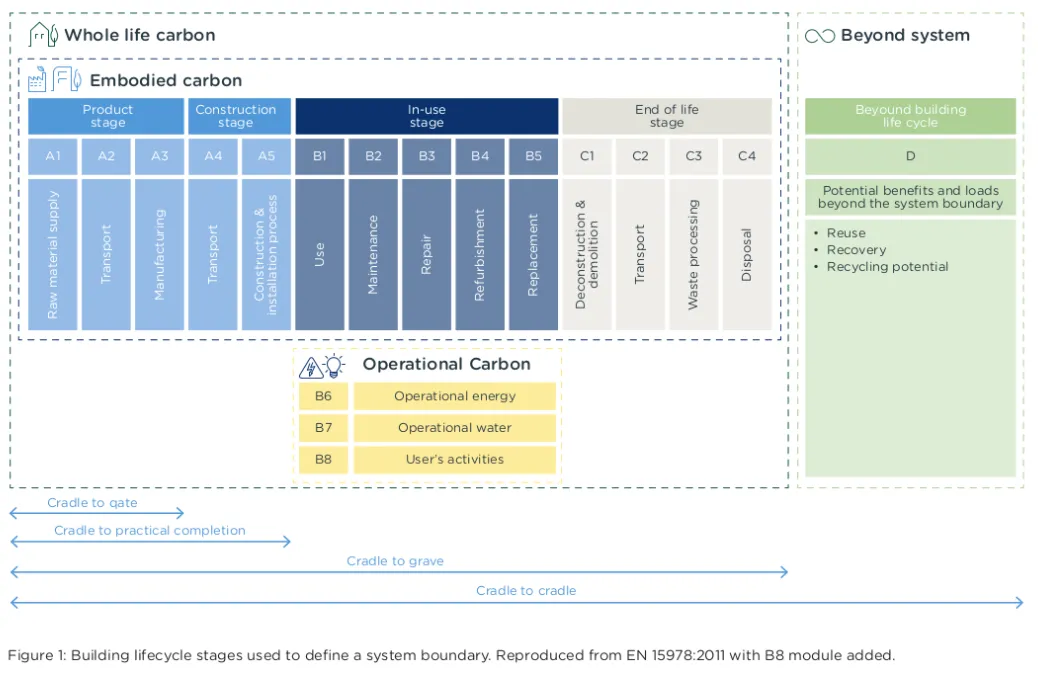
Building lifecycle stages used to define a system boundary. Reproduced from EN 15978:2011 with B8 module added by Ramboll
Building Element Groups
Building element groups, crucial in organising the assessed building model, show discrepancies in mandatory and voluntary inclusion across different LCA methodologies. The chosen elements and the level of detail significantly influence the impact assessment, underscoring the need for clear communication of the LCA scope.
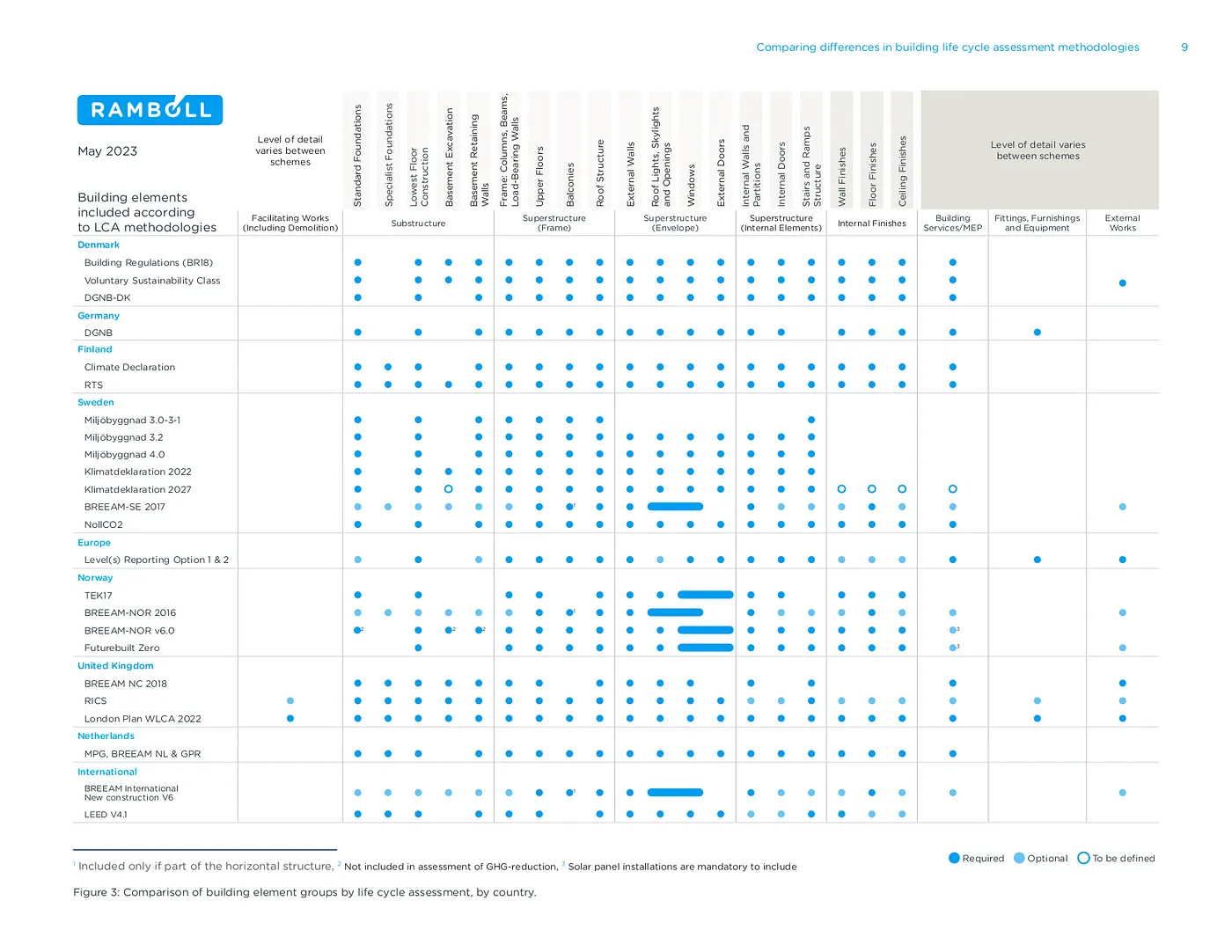
Comparison of building element groups by life cycle assessment, by country by Ramboll
Floor Area Definitions and Metrics
Comparing LCAs often involves presenting results per unit floor area. However, the definition of a building’s floor area, which impacts the floor area metric, varies across different countries and methodologies. This variation poses challenges in ensuring accurate comparisons.
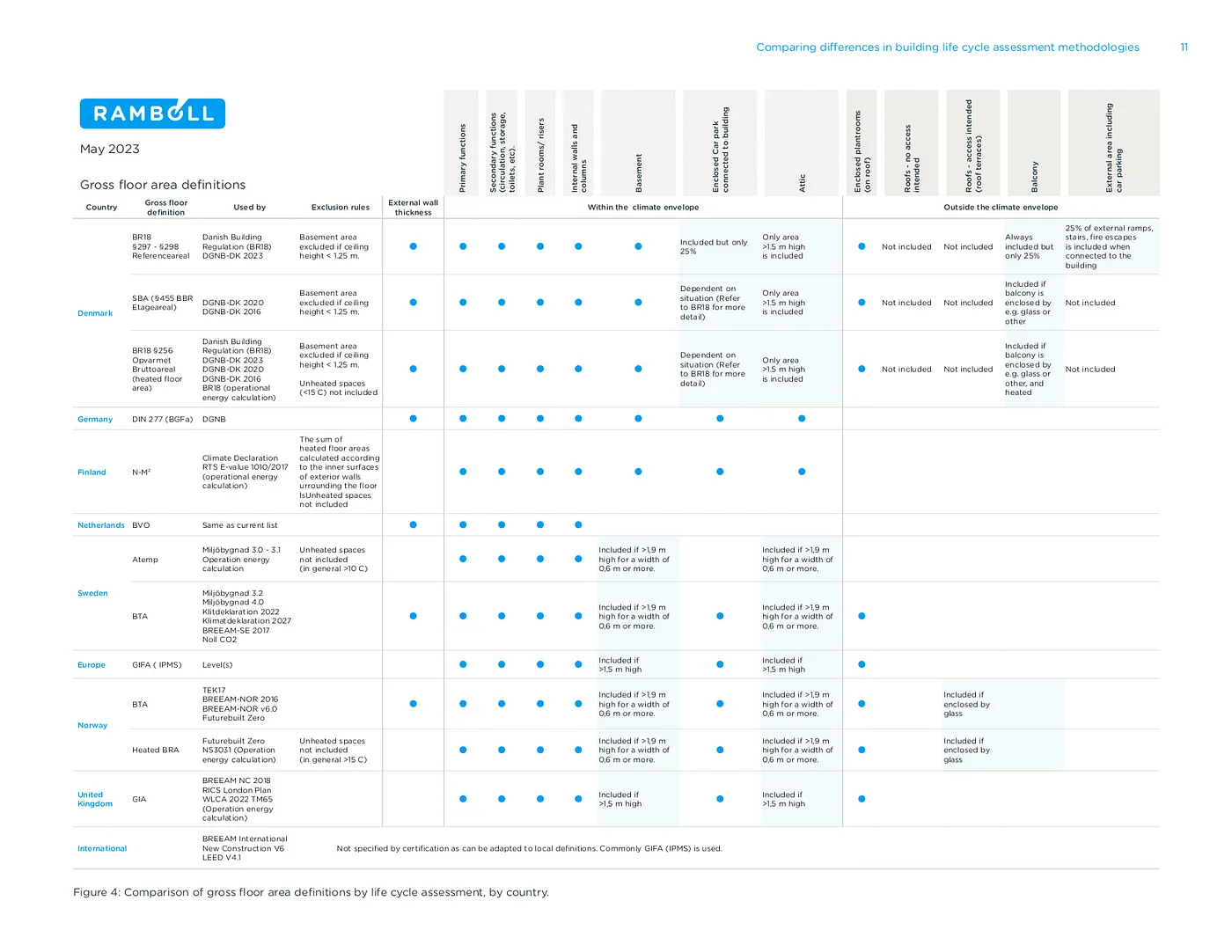
Comparison of gross floor area definition by life cycle assessment, by country by Ramboll
Reference Study Period
The temporal boundary for an assessment, or the Reference Study Period (RSP), significantly influences the LCA outcomes. Differences in RSP can lead to ambiguous comparisons, necessitating careful consideration and adjustment for accurate evaluation.
Impact Categories
While Global Warming Potential (GWP) is a universally recognised metric and required by all LCA methodologies, the inclusion of other impact categories varies. This variability underscores the need for a broader understanding of LCAs beyond merely measuring carbon dioxide emissions.
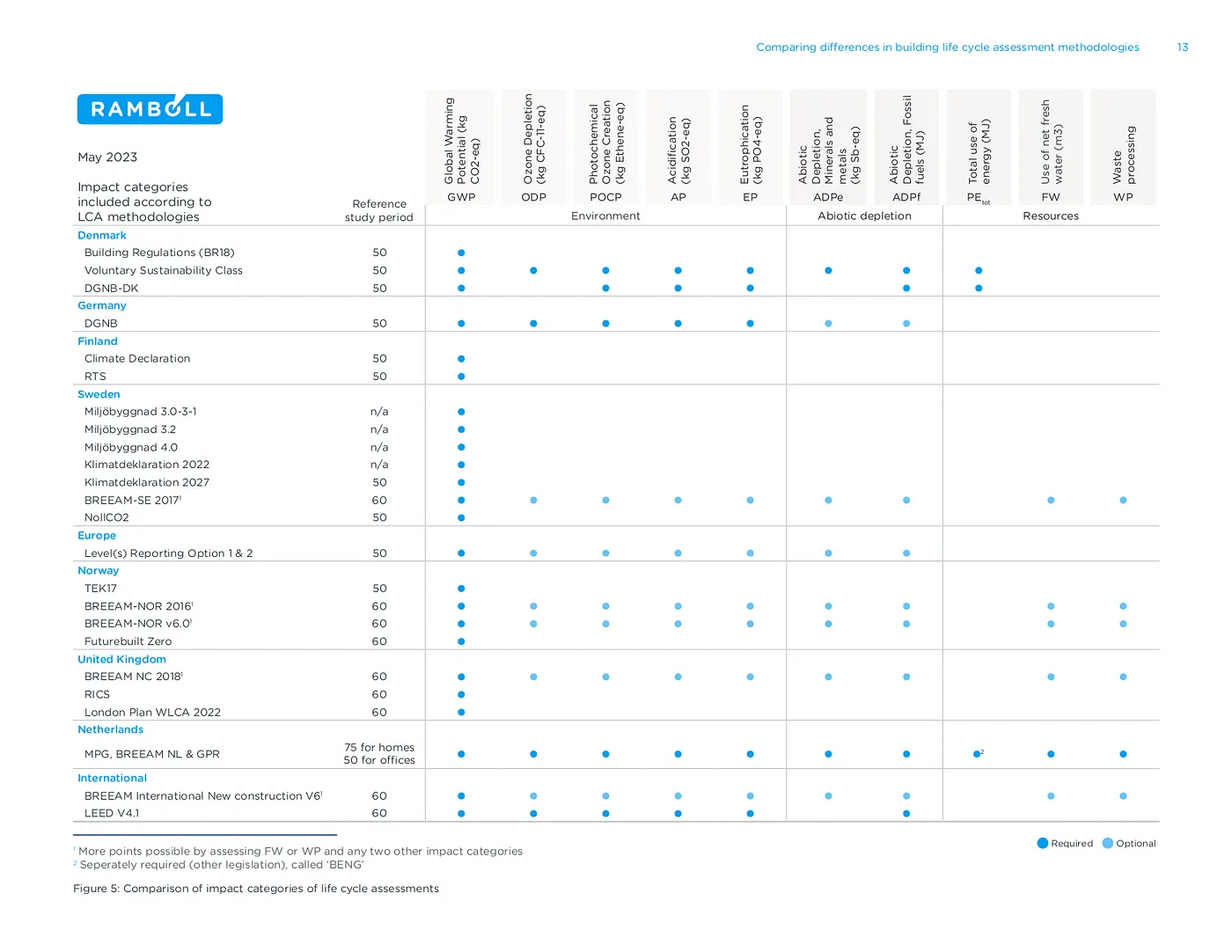
Comparison of impact categories of life cycle assessments by Ramboll
Addressing Other Sources of Uncertainty
Several other factors contribute to the reliability and comparability of LCAs, including the design stage of the LCA, the skills and experience of LCA practitioners, the availability and use of standardised GWP values and Environmental Product Declarations (EPDs), differences in calculation software, treatment of biogenic carbon, and the inclusion of decarbonisation pathways.
A Practical Example: Danish vs. Swedish LCAs
A theoretical comparison of identical office buildings on either side of the Danish-Swedish border, assessed using Danish and Swedish regulations, highlights the potential distortion in LCA outcomes due to methodological differences. Even when reduced to common life cycle stages and building element groups, significant discrepancies persist due to differing data sets and the application of penalty values to generic data in the Swedish methodology.

GWP results for a Danish vs Swedish building (BR18) by Ramboll
The Path Forward for Building LCAs
The long-term solution lies in enhancing the harmonisation of methodologies and the use of common scope definitions. Current initiatives, like the European Commission’s update to the Energy Performance of Buildings Directive and Ramboll’s development of a common format for presenting carbon assessment findings, aim to improve accuracy, consistency, and transparency in LCAs. Ramboll’s benchmarking database, designed to accommodate a wide range of LCA methodologies through sufficient data granularity, represents a step towards enabling more consistent benchmarks and comparisons.
Conclusion
Life cycle assessments are pivotal in evaluating and guiding sustainable building design. However, the myriad of methodologies, assessment elements, and interpretations create substantial inconsistencies in reported carbon values. Achieving greater harmonisation, enhancing rigor, and ensuring robust compliance are crucial steps towards addressing these challenges. Recognising and delineating life cycle scopes and boundaries is essential in assessing performance and making meaningful comparisons. Ramboll’s benchmarking database exemplifies an approach towards collecting and comparing building carbon data, driving the industry towards more accurate, consistent, and transparent LCAs, and ultimately contributing to the decarbonization of the built environment.
If you are interested in further regulation updates check our regulation category which we constantly update and take a look at our updated embodied carbon optimizer tool for a simplified LCA in your early design phases.
Related articles
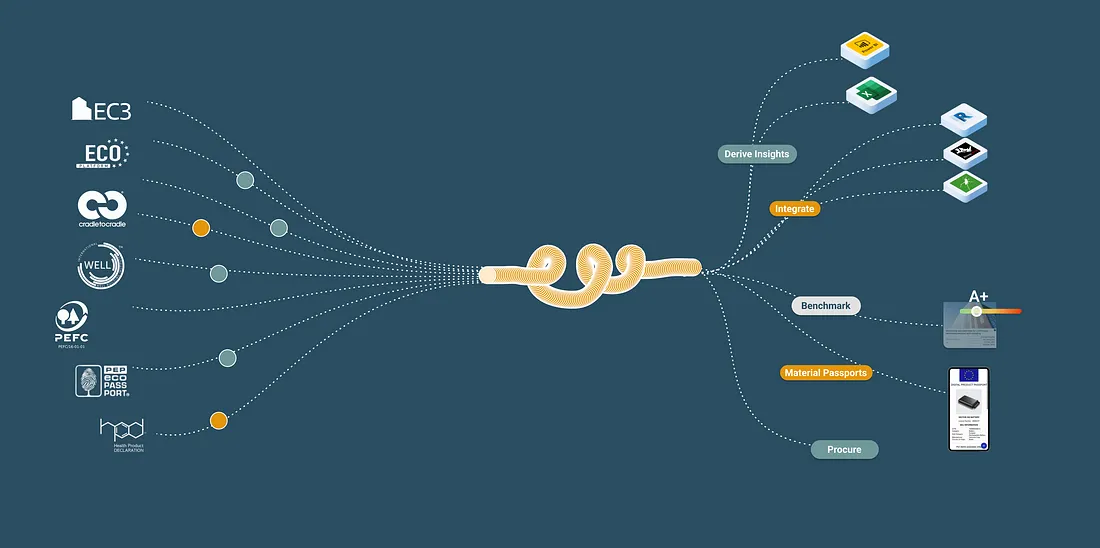
The Age of Integration — 10 Examples of Integrating Carbon Data in AEC, and Why They Matter
By integrating carbon data into the target-setting process, stakeholders can base their goals on real, actionable data, leading to more effective and sustainable project outcomes.
Read more
Net Zero is a Data Integration Problem
In recent years, numerous organizations in real estate and infrastructure have committed to ambitious net zero targets. This means reducing reliance on non-renewable energy and materials and adopting more sustainable design, engineering and procurement practices.
Read more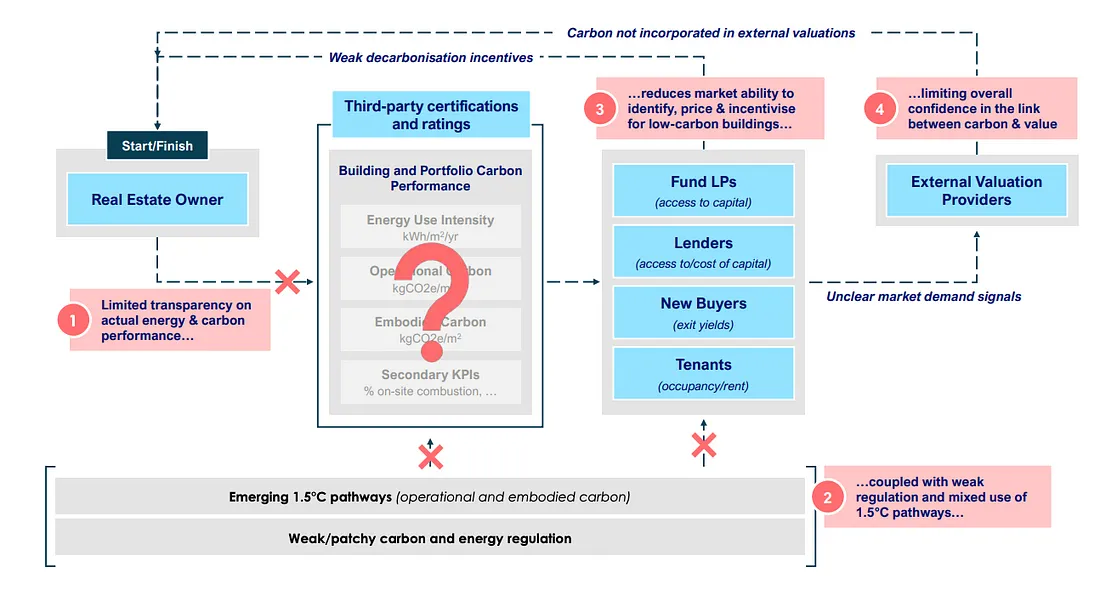
Tapping into the Low-Carbon Real Estate Market
This article is based on a paper by Leaders of the Urban Future (LOTUF) in partnership with Systemiq and highlights the required steps to decarbonizing in the real estate sector for a greener future.
Read more